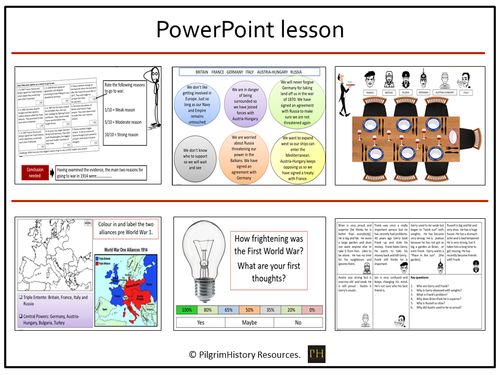


World War I
The aim of the lesson is to understand why alliances and rivalries at the beginning of the Twentieth Century led to the outbreak of war.
This lesson sets out the long term causes of the First World War based on four underlying principles: Nationalism, Imperialism, Alliances and Militarism.
The lesson asks the students who and why were countries arguing with each other based on their geographical as well as their historic national rivalries.
Students then have to decide who could sit next to each other at a dinner party after they have justified their reasons for distrust and paranoia.
The alliances are plotted and colour coded on maps, culminating in a task prioritising and linking the reasons as to why the world was ready for war in 1914.
The lesson is enquiry based with a key question using a lightbulb posed at the start of the lesson and revisited throughout to show the progress of learning.
The resource includes suggested teaching strategies and differentiated materials, and comes in Powerpoint format if there is a wish to adapt and change.
Something went wrong, please try again later.
This resource hasn't been reviewed yet
To ensure quality for our reviews, only customers who have purchased this resource can review it
Report this resourceto let us know if it violates our terms and conditions.
Our customer service team will review your report and will be in touch.